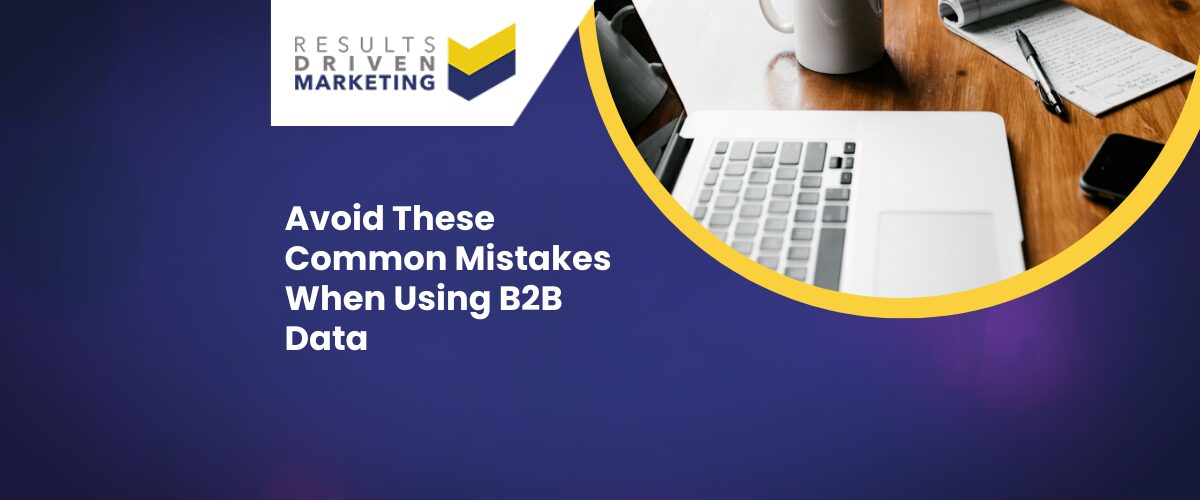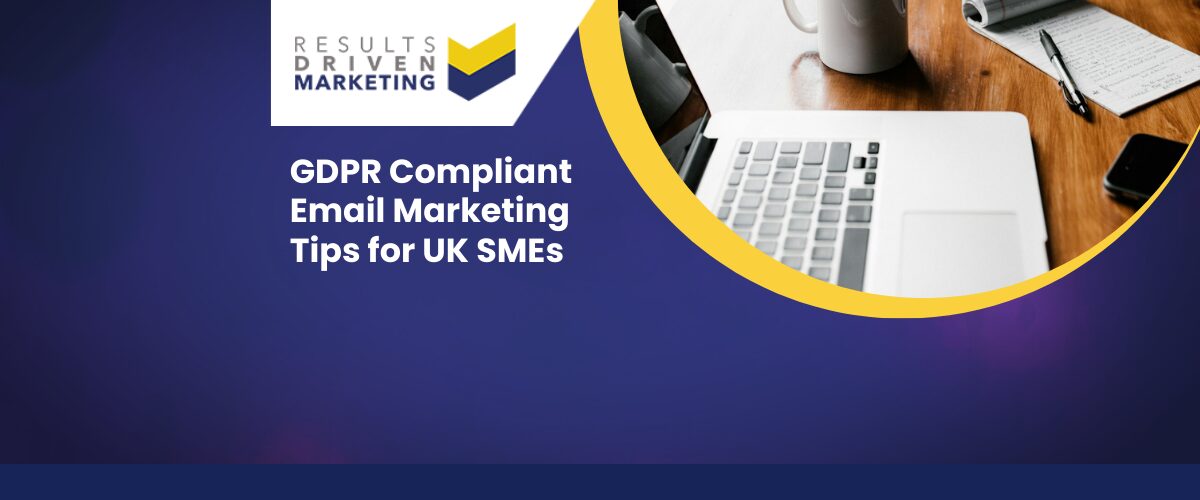
Avoid These Common Mistakes When Using B2B Data
Avoid These Common Mistakes When Using B2B Data
You’ve got the data, but the results just… aren’t there.
You’ve invested in a B2B list, maybe even built one up over time, and now it’s sitting in your CRM — names, emails, job titles, the whole lot. But when you launch a campaign or start calling through it, things don’t go quite the way you hoped. Low open rates, no replies, wrong contact details — or worse, radio silence.
Sound familiar?
Here’s the thing: most businesses — especially small and medium-sized ones — run into this. And no, it’s not because the data’s “bad.” In most cases, the real issue is how it’s being used.
Good data can only take you so far. If it’s not organised, cleaned, segmented, or used strategically, it’s going to fall short. The good news? These are all fixable problems — and we see them all the time.
This article breaks down the most common mistakes we see when businesses try to use B2B data, and more importantly, how to avoid them. Whether you’re buying lists, using your own, or a mix of both, this will help you get more out of what you’ve already got.
Mistake #1 — Using Outdated or Incomplete Data
Why This Happens
Let’s face it — B2B data goes stale faster than most people realise.
Contacts change jobs, companies go through restructures, new decision-makers step in, businesses relocate, and sometimes they close entirely. And yet, it’s really common for businesses to hold onto lists for months — even years — thinking, “It’s still recent enough.”
But that’s the catch. What was accurate six months ago could already be out of date today. And if you’re using that data to build campaigns, you’re probably seeing the fallout without even realising the cause.
And we totally get it — cleaning and updating data doesn’t feel like a priority when there are emails to send and meetings to book. But unfortunately, this is one of those things that directly affects performance whether you give it attention or not.
The Risk to Your Campaigns
When your database is filled with old or incomplete records, it starts to show — fast. Here’s what we see most often:
-
Poor open rates – because your message isn’t reaching the right inbox, or the person no longer works there.
-
Bounced emails – which damage your sender score and can even get your email account flagged or throttled.
-
A damaged sender reputation – especially if you keep emailing outdated contacts who’ve disengaged or opted out.
-
Missed opportunities – when the real decision-makers never see your message because their details were missing or wrong.
You could have the perfect pitch — but if it never lands in front of the right person, it doesn’t matter.
What to Do Instead
Here’s what we recommend to every client who wants to get more from their data:
-
Validate and clean your list regularly. Even a basic clean-up before each campaign can prevent major headaches.
-
Use data appending to fill in the gaps. Missing job titles? No phone numbers? We can help update and enhance your existing records.
-
Partner with a supplier who can refresh data on request. You don’t always need a brand-new list — sometimes just refreshing what you already have is enough to get better results.
Clean data = better results. It’s a simple truth, and it’s one of the first places to start if your outreach isn’t performing the way you’d hoped.
Mistake #2 — Targeting Too Broadly
Why It’s a Problem
It’s easy to fall into the trap of thinking, “Let’s send it to everyone — someone will bite.” And honestly, a lot of businesses do exactly that. You’ve got a big list, so it feels logical to cast a wide net and hope for the best.
But here’s the issue — when your message is too broad, it ends up feeling irrelevant. And in B2B marketing, if your email doesn’t feel immediately relevant to the person reading it, it’s probably getting deleted… or ignored entirely.
This tends to happen when the data hasn’t been segmented. So instead of targeting, say, Marketing Managers in the tech sector with tailored messaging, businesses end up sending the same generic pitch to people across industries, roles, and regions — all with different priorities and pain points.
And unfortunately, one-size-fits-all almost always leads to one outcome: no real engagement.
Better Segmentation = Better Results
When your data is segmented, your messaging becomes more focused, more relevant, and far more effective. It doesn’t have to be complicated — even basic filters can make a big difference. We suggest starting with:
-
Industry – Speak to the specifics of their world. A message that resonates with someone in property management won’t land the same with someone in healthcare.
-
Company size – Tailor the offer depending on whether you’re speaking to a startup or an established business.
-
Job title or role – Understand who the decision-makers are vs. influencers, and adjust your language accordingly.
-
Location or region – Especially important for localised offers or compliance-based messaging.
Real-World Example
A client of ours was using a single list of 12,000 contacts to promote a new software tool. Same subject line, same messaging — sent to everyone.
We helped them segment the list into four groups based on industry and company size. The result? A 40% increase in reply rates, just from matching the messaging more closely to the people receiving it.
It wasn’t about rewriting the whole campaign — it was about making the data work harder.
Mistake #3 — Not Screening for CTPS (UK Businesses)
Why It Matters
If your marketing or sales activity includes making phone calls to UK businesses, this one’s important — and often overlooked.
The Corporate Telephone Preference Service (CTPS) is a legal requirement in the UK. It’s essentially a do-not-call list for businesses. If a company is registered on the CTPS and you call them without prior consent, you could be at risk of a complaint — or worse, an investigation by the ICO (Information Commissioner’s Office).
And while most small and medium-sized businesses don’t mean to break the rules, many simply aren’t aware of this regulation — or don’t realise their list might include CTPS-registered numbers.
The result? Unintended non-compliance that can damage your brand, lead to fines, or get your team marked as a nuisance caller. Not ideal.
The Risks of Ignoring It
Here’s what happens if you don’t screen your data before dialling:
-
You might be calling people who legally shouldn’t be contacted
-
You open your business up to formal complaints or legal action
-
You damage your brand reputation — especially if you’re calling persistently
-
You waste your team’s time on conversations that could’ve been filtered out
The worst part? It’s completely avoidable.
What to Do Instead
This is one of the easiest mistakes to fix — and one of the most important to get right.
-
✅ Always screen your data against the CTPS before calling — it’s a basic compliance step that protects your business.
-
✅ Make it part of your process — not a one-off task. Lists get updated, so CTPS screening should be part of your prep before every campaign.
-
✅ Work with data providers (like us!) who include CTPS checks as standard — that way, you know the contacts you’re calling are safe to contact.
If you’re not sure whether your list has already been screened, feel free to ask us — we’re always happy to take a look or run it through our tools for you.
Mistake #4 — Sending One Email and Hoping for the Best
Why Multi-Touch Wins
This one’s surprisingly common — and completely understandable. You’ve built a campaign, crafted the email, uploaded the data, pressed send… and then waited.
But here’s the thing: in B2B, one email is almost never enough. People are busy. Inboxes are crowded. Even the most relevant message can get lost in the shuffle. And if there’s no follow-up? That opportunity often disappears for good.
We often see businesses, especially smaller teams, put everything into that first email — and then stop. No reminder. Not a check-in. No nudge. And unfortunately, it usually means the data doesn’t get the chance to do what it was meant to do.
If you’re only reaching out once, you’re not giving your message the space it needs to cut through.
A Smarter Approach
This doesn’t mean you need to overwhelm people — just be consistent and strategic with your outreach. A multi-touch approach gives your message more opportunities to be seen, read, and responded to.
Here’s what that might look like in practice:
-
Day 1: Send your intro email
-
Day 3–4: Connect on LinkedIn or like/comment on a recent post
-
Day 5–7: Send a short follow-up email or ask a relevant question
-
Week 2: Follow up with a phone call if appropriate
Each touchpoint builds familiarity. And the data you have — job role, industry, seniority — helps guide how you approach them at each stage.
Why This Works
We’ve helped multiple clients structure simple 3–4 step sequences using the same data set — and the difference is night and day. A single email might get a 2–3% response rate. Add two follow-ups, and that can jump to 10% or more.
It’s not about being pushy — it’s about showing up. Consistently. Professionally. And with relevance.
Mistake #5 — Not Reviewing or Improving Your List Post-Campaign
Post-Campaign Clean-Up Matters
So, the campaign’s done. You’ve sent the emails, followed up with a few calls, maybe even had a couple of conversations. Great. But what happens next?
For a lot of businesses, the answer is… nothing.
The campaign ends, and the list just sort of sits there — untouched — until it’s used again. But here’s the problem: every campaign leaves behind valuable clues, and if you’re not reviewing what happened, you’re missing a massive opportunity to improve.
Even the best-performing data needs to evolve. Over time, contacts change, responses slow down, people unsubscribe, bounce rates creep up — and if you don’t make any changes between campaigns, you’re essentially repeating the same mistakes.
What You Can Do
Taking just a little bit of time to review your list after a campaign can make a big difference to your next one. Here’s what we suggest:
-
✅ Identify hard bounces and remove them – these are hurting your sender reputation.
-
✅ Review opens, clicks, and replies – spot the segments that performed best (or worst).
-
✅ Suppress disengaged contacts – no need to keep emailing people who haven’t opened in six months.
-
✅ Update details where possible – if someone replied saying they’re not the right contact, update your list accordingly.
-
✅ Consider enriching or refreshing the data – if the response rate was low, maybe it’s time to add new fields, top up the list, or update stale entries.
You don’t need a full data overhaul after every campaign — but a light touch clean-up and review goes a long way in keeping your outreach effective and your lists in good shape.
And if that all sounds like a bit of a chore, don’t worry — we help with this too.
Final Thoughts: Good Data Deserves a Good Strategy
If you’ve made one (or more) of these mistakes, you’re not alone. In fact, most of the businesses we speak to have run into at least a few of these along the way — and honestly, that’s okay.
Because the truth is, using B2B data effectively isn’t just about having the data. It’s about what you do with it.
Clean, up-to-date, well-segmented data — used in the right way — can absolutely transform your campaigns. It can help you reach the right people, with the right message, at the right time. But without structure, strategy, and maintenance, even the best list can underperform.
The good news? Every one of these mistakes is easy to fix. And whether you’re starting with a brand-new list or trying to make sense of what you’ve already got, you don’t have to figure it out alone.
How RD Marketing Can Help
At RD Marketing, we don’t just supply B2B data. We help businesses use it properly — so it drives real conversations, not just clicks and bounces.
We can help you:
-
✅ Clean and validate your current database
-
✅ Fill in missing details with our data appending services
-
✅ Screen your contacts for CTPS compliance
-
✅ Provide fresh, fully-segmented data based on your campaign goals
- ✅ Understand GDPR as it pertains to cold outreach
If you’re planning your next outreach and want to make sure your list is campaign-ready, just drop us a message. We’re always happy to take a look and offer honest, practical advice — no pressure, no jargon.





